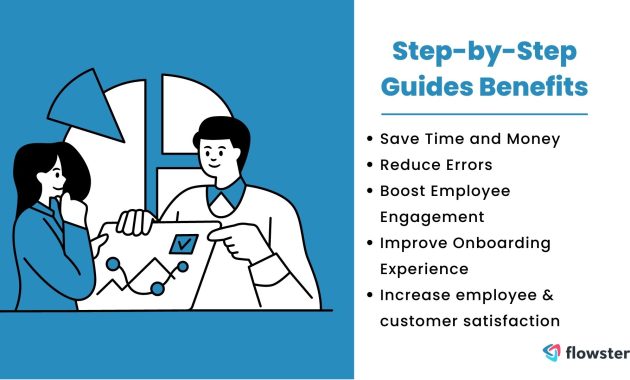
Step-by-Step Guide to Business Intelligence Software in Simple Steps
In today’s data-driven world, businesses are drowning in information. Making sense of this deluge, however, is the key to success. Business Intelligence (BI) software offers the crucial tools to transform raw data into actionable insights. This step-by-step guide will help you navigate the world of BI software. It simplifies the process, making it accessible even if you’re new to the concept. We’ll break down the process into easy-to-follow steps. This will help you implement BI software effectively in your organization.
Understanding Business Intelligence Software
Before diving into implementation, let’s define what Business Intelligence software is. It’s a technology platform. It analyzes historical and current data. Its purpose is to identify trends, patterns, and anomalies. This helps organizations make informed decisions. BI software offers a range of functionalities. These include data integration, data warehousing, reporting, and data visualization. Ultimately, it empowers businesses to optimize performance and gain a competitive edge. The core function of Business Intelligence software is to provide insights. These insights are based on data analysis. They are presented in a way that’s easy to understand. This allows for quick and informed decision-making.
Assessing Your Business Needs
The first step is to understand your business requirements. What specific questions do you need answered? What are your key performance indicators (KPIs)? Identify the data sources you’ll need to analyze. This could be sales data, marketing metrics, or financial records. Define your goals. Are you trying to improve sales, reduce costs, or enhance customer satisfaction? Your answers will shape your Business Intelligence software selection. It will also influence your implementation strategy. Consider the size of your organization. Also, consider its technical capabilities. This will help you choose the right BI software solution.
Choosing the Right Business Intelligence Software
The market offers a wide array of BI software options. Each has its own strengths and weaknesses. Some popular choices include Tableau, Power BI, and QlikView. Research different software providers. Look at their features, pricing models, and user reviews. Consider factors such as ease of use, scalability, and integration capabilities. Ensure the software can integrate with your existing data sources. Evaluate the vendor’s customer support and training resources. This will help you make an informed decision. Select the software that best aligns with your business needs and budget. Choosing the right Business Intelligence software is crucial for success.
Data Integration and Preparation
Once you’ve selected your software, the next step is data integration. This involves connecting your data sources to the BI platform. This might require using connectors or APIs. Data preparation is critical for accurate analysis. Clean and transform your data to ensure consistency and quality. This often involves removing duplicates, correcting errors, and standardizing formats. Data warehousing is often a key component of this process. A data warehouse consolidates data from various sources. It provides a central repository for analysis. Data quality is paramount. Poor data quality leads to inaccurate insights and flawed decisions. Invest time in data preparation. It is an essential step for the success of your Business Intelligence software implementation.
Designing and Building Reports and Dashboards
Reporting and dashboards are the heart of BI. They present data insights in a clear and concise manner. Design reports and dashboards that address your specific business questions. Choose appropriate visualizations. These could be charts, graphs, or tables. Ensure the dashboards are user-friendly and easy to navigate. Focus on the most important KPIs. Avoid overwhelming users with too much information. Customize the dashboards to meet the needs of different users. Train your team on how to interpret and use the reports and dashboards. Regular review and refinement of reports and dashboards are also crucial. This ensures they continue to meet your evolving business needs.
Data Analysis and Interpretation
With your reports and dashboards in place, you can begin analyzing your data. Look for trends, patterns, and anomalies. Use the software’s analytical tools to drill down into the data. Identify the root causes of issues. Interpret your findings. Translate data insights into actionable recommendations. Collaborate with stakeholders to gain different perspectives. Validate your findings with other data sources. This will ensure accuracy. Don’t be afraid to experiment with different analyses. Data analysis is an iterative process. It requires continuous learning and refinement. The goal is to uncover valuable insights. These insights will drive better business decisions.
Implementing and Training Your Team
Successful implementation involves more than just installing the software. It also requires careful planning and execution. Develop a detailed implementation plan. This plan should outline timelines, responsibilities, and milestones. Provide comprehensive training to your team. Ensure they understand how to use the software effectively. Offer ongoing support and resources. This will help them overcome challenges. Encourage user adoption. Regular communication and feedback are also essential. This will ensure the smooth rollout of your Business Intelligence software. Make sure your team feels comfortable using the software. This is key to maximizing its value.
Monitoring and Optimization
Once your Business Intelligence software is up and running, it’s important to monitor its performance. Track key metrics. This will ensure the software is delivering the expected value. Regularly review your reports and dashboards. Make adjustments as needed. Identify any areas for improvement. Ensure your data sources are up-to-date and accurate. Stay informed about the latest BI trends and technologies. Optimize your software configuration. This will improve performance and efficiency. Continuous monitoring and optimization are essential for long-term success. They ensure that your Business Intelligence software continues to meet your evolving business needs.
Advanced BI Techniques
Once you’ve mastered the basics, explore advanced BI techniques. These can further enhance your analytical capabilities. Consider implementing predictive analytics. This uses historical data to forecast future trends. Explore machine learning algorithms. These can automate data analysis. They can also uncover hidden patterns. Implement data governance policies. This will ensure data quality and security. Invest in data visualization best practices. This will improve the clarity and impact of your insights. Embrace advanced techniques. They can unlock new levels of understanding and value from your data. They will help you get the most out of your Business Intelligence software.
The Benefits of Business Intelligence Software
Implementing Business Intelligence software offers numerous benefits. It improves decision-making. It also helps you gain a competitive advantage. You can identify new opportunities. You can also optimize operational efficiency. It enhances data-driven insights. It leads to better business outcomes. It streamlines reporting processes. It also provides a single source of truth for your data. It supports better collaboration across teams. It also drives innovation and growth. The benefits are clear. BI software is an essential tool for businesses. It helps them thrive in today’s data-rich environment.
Common Challenges and How to Overcome Them
While BI software offers significant benefits, there are also challenges. These challenges need to be addressed. Data quality issues can lead to inaccurate insights. Data silos can hinder access to information. Lack of user adoption can limit the software’s impact. Overcoming these challenges requires careful planning. It also requires proactive measures. Invest in data governance and quality control. Break down data silos through integration. Provide comprehensive training and support. Foster a data-driven culture. By addressing these challenges, you can maximize the value of your Business Intelligence software implementation.
Conclusion: Embracing the Power of Data
Business Intelligence software is a powerful tool. It empowers businesses to make data-driven decisions. This guide provides a step-by-step approach to implementing BI software. It simplifies the process. It helps you navigate the complexities. By following these steps, you can unlock the power of your data. You can gain valuable insights. You can also drive business success. Embrace the power of data. Let BI software be your guide.
[See also: Choosing the Right BI Software for Your Business, Data Visualization Best Practices, Data Integration Strategies]

